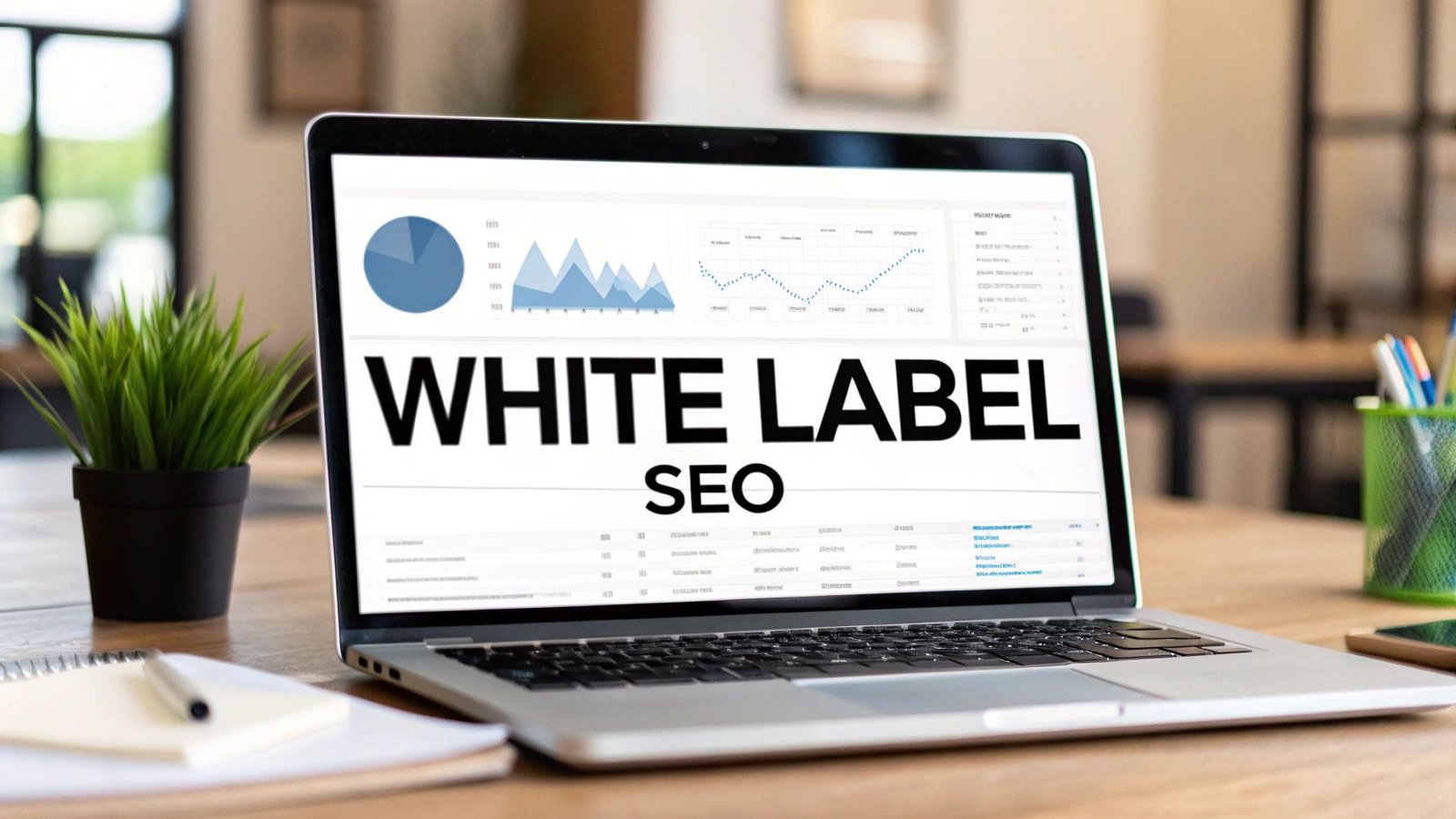As digital landscapes continue to evolve, content marketing in 2025 has cemented its role as the backbone of effective SEO strategies. With Google placing increasing emphasis on people-first content, brands that prioritize valuable, experience-rich, and purpose-driven content are gaining higher visibility, better engagement, and long-term trust.
According to HubSpot’s 2024 State of Marketing Report, 82% of marketers are actively using content marketing to drive organic traffic and customer trust.
The goal? Align your brand with Google’s E-E-A-T framework (Experience, Expertise, Authoritativeness, Trustworthiness) while providing authentic, problem-solving content.
This in-depth guide explores how content marketing directly fuels SEO performance in 2025, what strategies you should implement, and why quality content is more essential than ever in driving organic growth.
The Evolution of Content Marketing in 2025
The landscape of content marketing has undergone a seismic shift in 2025. It’s no longer just about publishing blog posts and hoping for organic traffic.
Today, successful content marketing is a data-fueled, AI-driven, and user-first ecosystem—designed to deliver relevance, intent-matching experiences, and measurable ROI at every touchpoint.
Modern content strategies are built around deep audience understanding, made possible through AI tools that analyze user behavior, search patterns, and engagement signals in real time. This allows marketers to deliver hyper-personalized content across platforms, devices, and user journeys.
According to Demand Metric’s 2024 Study, content marketers leveraging AI and personalization have experienced a 63% increase in conversion rates, underscoring the growing importance of automation and tailored messaging.
Here are the top-performing content formats dominating in 2025:
1. AI-Enhanced Blog Posts
AI tools are now helping marketers write better and faster, while also optimizing for user intent, natural language queries, and semantic search. These blog posts are crafted with tools that suggest headings, structure, internal linking, and even tone, allowing for content that ranks higher and reads better.
2. Video Shorts & Tutorials
With the explosion of TikTok, YouTube Shorts, and Instagram Reels, short-form video has become a vital part of any content strategy. Short-form videos have the highest ROI of any content type in 2025, according to HubSpot’s 2024 Marketing Trends Report.
These formats are ideal for delivering quick value, increasing shareability, and improving brand recall, especially among mobile-first audiences.
3. Webinars & Podcasts
Long-form audio and video content remains a powerful way to build authority and engage niche audiences. Webinars, expert panels, and branded podcasts are being used to foster deeper trust and nurture high-intent leads.
4. Interactive Tools & Quizzes
Content that involves active participation—like calculators, quizzes, and assessments—has proven to significantly boost time-on-page and conversion rates. These are especially effective as lead magnets and for gathering first-party data in a cookie-less world.
5. Data-Driven Reports
Brands are investing more in publishing original research and industry insights. These high-value assets not only generate backlinks and media coverage but also position your brand as a thought leader in your niche.
In 2025, content is no longer just written—it’s experienced. It’s interactive, visually appealing, and seamlessly integrated across all stages of the funnel.
How Content Marketing is Helping SEO in 2025?
The interplay between content marketing and SEO is more pronounced than ever. Here’s how strategic content creation enhances SEO performance:
1. Establishing Topical Authority and Expertise
Consistently producing high-quality content on specific subjects positions your brand as an authority in your field. This not only builds trust with your audience but also signals to search engines that your site is a credible source of information.
According to HubSpot, topic clusters improve ranking potential by 20-25% and reduce content cannibalization.
For instance, a technology firm regularly publishing detailed analyses on emerging tech trends demonstrates expertise, which can lead to higher search rankings.
2. Enhancing User Engagement Metrics
Engaging content reduces bounce rates and increases dwell time—key metrics that search engines consider when ranking pages. According to Moz, pages with an average time on site of 3+ minutes are 2X more likely to rank on page one.
Interactive elements, compelling storytelling, and multimedia content can captivate users, encouraging them to spend more time on your site and explore additional pages.
3. Generating High-Quality Backlinks
Authoritative content naturally attracts backlinks from reputable websites. These inbound links are crucial for SEO, as they signal to search engines that other sites vouch for your content’s credibility. B2B marketers say that research-based content is the #1 driver of backlinks and shares (Content Marketing Institute, 2024).
For example, publishing original research or comprehensive guides can encourage industry peers to link to your content as a valuable resource.
4. Optimizing for Voice and Conversational Search
As of 2025, over 60% of searches in the U.S. are voice-based (Statista). With the rise of voice-activated assistants, optimizing content for conversational queries is essential.
Structuring content to answer common questions directly and succinctly can improve visibility in voice search results. Implementing FAQ sections and using natural language can align your content with the way users verbally express queries.
5. Supporting Semantic Search and Contextual Relevance
Search engines have advanced in understanding the context and intent behind user queries. Creating content that comprehensively covers topics, incorporates related terms, and addresses various aspects of a subject can enhance semantic relevance. This approach helps search engines connect your content with a broader range of related searches.
6. Aligns with Google’s Helpful Content Guidelines
In 2025, Google’s ranking systems rely heavily on E-E-A-T (Experience, Expertise, Authoritativeness, Trustworthiness). Content must demonstrate real-world knowledge, first-hand insights, and transparent sourcing.
Here’s how content marketing fulfills these requirements:
- First-hand experience-based blogs build “Experience.”
- Industry expert interviews showcase “Expertise.”
- Backlinks and brand mentions support “Authoritativeness.”
- Citing credible sources, author bios, and transparent CTAs add “Trust.”
- Helpful content = content that serves the user, not the algorithm.
7. Improves Internal Linking and Site Structure
With a consistent content strategy, you can build a solid internal linking framework. This:
- Passes link equity across your website
- Helps Google crawl and index your pages efficiently
- Guides users to related, helpful resources
Strategic content marketing enables cluster-based content creation, where pillar pages link to sub-topic blogs and vice versa. This builds both UX and SEO value.
Current Content Marketing Trends Impacting SEO
Staying abreast of emerging trends is vital for aligning content marketing efforts with SEO objectives:
1. Content Experience (CX) Platforms
The rise of Content Experience Platforms (like Uberflip, Foleon, and Ion Interactive) reflects a shift from “creating content” to “crafting experiences.” These platforms allow marketers to design content journeys that are:
- Visually appealing and branded
- Personalized to user behavior
- Built for engagement (interactive elements, scroll triggers, adaptive layout)
This shift is crucial in 2025, when Google pays close attention to user experience signals like time on site, bounce rate, and content depth.
Content with enhanced design and interactive elements sees 4X more engagement and 2.5X longer session durations (Demand Metric, 2024).
2. Integration of AI and Automation
AI has moved from being a nice-to-have to an essential part of the content creation process. Tools like ChatGPT, Jasper, RanksPro and others are now used to streamline everything from topic ideation to content structuring and optimization. These AI assistants help marketers:
- Perform keyword and SERP analysis
- Generate outlines and SEO-friendly content drafts
- Suggest semantically related terms (LSI keywords)
- Tailor tone and format to different platforms
68% of marketers using AI tools report creating content twice as fast, with better engagement metrics (Content Marketing Institute, 2025).
The key is using AI to assist, not replace, human creativity. Content still needs to reflect authentic experience, originality, and brand voice to meet Google’s helpful content standards.
3. Predictive Analytics in Content Strategy
Thanks to predictive analytics and AI, marketers can now anticipate user needs before they explicitly express them. This enables the delivery of highly personalized content in real-time across channels.
According to Salesforce, predictive personalization increases conversion rates by 22% and content engagement by 35%.
Predictive content tools use data from:
- Past user behavior
- CRM interactions
- Browsing patterns and engagement history
These content marketing tools suggest the next best piece of content, CTA, or product. It’s like building a smart content funnel that adapts dynamically to each user.
4. User-Generated Content (UGC) and Community-Led Campaigns
In 2025, consumers trust real voices over polished brand messages. That’s why UGC and community-led content (like reviews, testimonials, unboxing videos, and collaborative social campaigns) are driving major gains in reach and SEO.
Google values authenticity and fresh content, and UGC checks both boxes. It also:
- Enhances topical relevance (real users use natural language)
- Increases keyword diversity
- Encourages backlinks and shares
84% of consumers trust peer content more than brand-generated content (Nielsen, 2024), and UGC can increase dwell time by 90%.
5. Zero-Click Optimization
With featured snippets, knowledge panels, People Also Ask boxes, and voice search results dominating the SERP, your content must now be optimized not just to rank, but to deliver answers immediately.
This is called zero-click optimization, and it requires content that is:
- Structured (tables, lists, step-by-step formatting)
- Concise (answering search queries within 40–60 words)
- Marked up with schema and structured data
As of 2025, nearly 65% of Google searches result in no clicks at all (SparkToro, 2025). That makes snippet-focused content a key priority.
Future-Proof Content Marketing Tactics for SEO
To win in search and content marketing in 2025 and beyond, businesses must shift from outdated tactics to sustainable, value-driven strategies that are aligned with user intent and Google’s evolving algorithm. The following strategies are not just “trending”—they are foundational practices designed to future-proof your content for visibility, engagement, and long-term SEO success.
1. Intent-Based Audience Research
Why It Matters: Google’s algorithms are increasingly focused on delivering results that match user intent, not just keywords. Understanding the why behind a search helps you create content that connects, converts, and ranks.
How to Implement:
- Use tools like AlsoAsked, AnswerThePublic, and Google’s “People Also Ask” to understand related queries.
- Segment your audience based on funnel stages: awareness, consideration, and decision.
- Map content to search intent types: informational, navigational, commercial, transactional.
Example: Instead of targeting just “best CRM,” target content for different intents:
- “What is a CRM?” (Informational)
- “Best CRM for small businesses” (Commercial)
- “HubSpot vs Salesforce comparison” (Transactional)
2. Keyword Clustering
Single-keyword optimization is outdated. Keyword clustering allows your content to rank for multiple related terms, improve topical authority, and create stronger internal linking structures.
How to Implement:
- Use tools like Surfer SEO, LowFruits, or SE Ranking to find semantically related keywords.
- Group keywords into themes or clusters that can be targeted in one piece of content or a content series.
- Optimize H1, H2, and body content with variations of the main keyword to capture long-tail traffic.
Pages optimized using keyword clusters rank for 5x more search queries on average (Ahrefs, 2024).
3. Create Pillar and Cluster Pages
Pillar-cluster content models strengthen your site architecture, help Google understand topical relationships, and boost rankings by building topical authority.
How to Implement:
- Identify core topics your brand wants to own (e.g., “Email Marketing”).
- Create a comprehensive pillar page that covers everything at a high level.
- Link to multiple cluster pages that dive deep into subtopics (e.g., “email A/B testing,” “best email automation tools”).
- Ensure all internal links flow both ways: pillar to cluster and cluster to pillar.
Google values sites with well-organized content silos—it helps with crawling efficiency and contextual relevance.
4. Optimize On-Page Elements
On-page elements still play a crucial role in SEO performance. Properly optimized pages send strong relevance signals and improve crawlability.
How to Implement:
- Optimize title tags and meta descriptions for CTR using emotional triggers and power words.
- Use header tags (H1-H4) to create a clear content hierarchy.
- Implement structured data/schema markup to enhance visibility in rich results (e.g., FAQs, reviews).
- Add image alt texts, internal links, and keyword variations naturally throughout the content.
- Compress images, lazy-load multimedia, and ensure mobile responsiveness to align with Core Web Vitals.
5. Repurpose Evergreen Content
Repurposing evergreen content extends its shelf life, improves ROI, and allows you to reach different audience segments across platforms.
How to Implement:
- Turn high-performing blog posts into LinkedIn carousels, short videos, infographics, or email series.
- Update internal links and optimize CTAs for new offers or goals.
- Repost refreshed versions of evergreen content on Medium, Quora, or industry forums.
Repurposing doesn’t just save time—it reinforces your messaging consistently across the user journey.
6. Focus on Search Intent Matching
Google’s Helpful Content System prioritizes content that satisfies real user intent, not just keyword usage. Pages that directly answer the query while providing added value tend to rank higher and stay longer on the SERP.
How to Implement:
- Begin content creation with the searcher’s problem in mind.
- Use clear, direct answers near the top of your content to increase chances of being featured in snippets.
- Build trust by adding expert insights, stats, and unique perspectives to go beyond generic answers.
Google now rewards first-hand expertise and trustworthy guidance—especially in YMYL (Your Money, Your Life) niches.
7. Build Authority with Data and First-Hand Experience
With Google’s E-E-A-T framework (Experience, Expertise, Authoritativeness, Trust), content that shows real-world usage, original data, and actionable insights earns more credibility and visibility.
How to Implement:
- Publish case studies, experiments, or customer success stories.
- Use original surveys or analytics data in your niche.
- Include author bios with credentials, certifications, or industry affiliations.
- Embed quotes from internal experts or collaborate with influencers.
Content backed by real data is 3x more likely to earn backlinks, according to Backlinko (2024).
8. Refresh and Update Old Content
Content decay is real. Even your best content loses traffic over time. Google prefers fresh, accurate, and updated content, especially for fast-evolving topics.
How to Implement:
- Conduct regular content audits (every 3-6 months) to identify declining pages.
- Refresh outdated stats, links, tools, and visuals.
- Add new insights, restructure for readability, and reoptimize for current keywords.
- Resubmit updated content to Google Search Console for quicker reindexing.
Neglecting content updates can lead to a 40% drop in organic traffic over 12 months (Content Decay Study, 2024).
Key Takeaways
As we move deeper into the digital-first economy of 2025, content marketing is no longer just about publishing articles or blogs—it’s about creating experiences, building authority, and solving real user problems with intent-driven precision.
Search engines have evolved—and so have users. Google’s recent algorithm updates are a testament to the fact that “content for the sake of content” is no longer enough. To stand out, you need to embrace a people-first approach backed by data, expertise, and a clear understanding of evolving search behavior.
Here’s what future-proof content marketers consistently do:
- They align content with real search intent, not vanity keywords.
- They adopt AI and analytics, not to replace creativity, but to enhance speed, scale, and precision.
- They build authority and trust by sharing original insights, real-world experience, and helpful, accurate information.
- They structure their websites around topic clusters, not isolated blog posts.
- And most importantly, they listen to their audience and adapt their content to their changing needs.
Whether you’re a startup looking to scale visibility or an enterprise brand aiming to dominate the SERPs, the strategies outlined in this blog will empower you to create content that doesn’t just rank, but resonates.
Remember, SEO and content marketing are long games. But with the right foundation, consistent optimization, and a relentless focus on delivering user value, your content won’t just survive future updates—it will thrive because of them.
If you’re ready to take your content strategy to the next level, now is the time to implement these future-proof tactics and stay ahead of your competition, while truly serving your audience.




